Technically, it’s still fall, as the first day of winter is still a little over two weeks away. The last two days though we’ve had more chilling cold, and seen more ice, than we see throughout some entire winter seasons.
I realize for those in more winter-prone latitudes that 21 degrees Fahrenheit (-6 C) is hardly front page news-worthy. This might be considered to be a balmy winter day in New York or Boston, but this is coastal California! We’re not cut out for extended runs of winter chill, our closets aren’t prepared for it, and our gardens aren’t usually planted to tolerate it. There’s no question that once this arctic air mass moves on, that I expect to see some carnage in the garden left in its wake.

This native Salva ‘Allen Chickering’ normally wouldn’t grow in an area where it becomes entombed in ice
Snow and ice is not something I’m a stranger to, I grew up in it, but that’s exactly why I choose to live here. There’s no question I’ve acclimated to our moderate coastal climate. That said, it’s not the coldest I’ve seen in this region over the decades I’ve lived here, but still significantly below average. Our winter weather is usually more mild and wet, not bone dry and bone-chillingly cold!
With enough advanced warning of this blast of Arctic air that was about to descend upon us, the usual precautions in the garden were taken. Beds of kale, lettuce, and peas (which I doubt will survive even with protection), strawberries, and garlic were all bundled up in row cover.
Barns and pens were bedded with extra straw, and the goats have been working feverishly on their under-layer of warm winter fluff to help them stave off the cold.
The last couple of mornings our first priority has been checking on the animals, and ensuring that frozen buckets are replaced with buckets of warm water. The bucks have been especially grateful for that, as their pen is a little more exposed up on the hill behind the house.
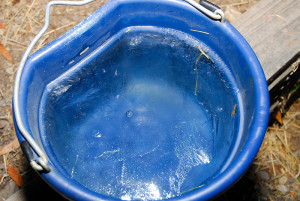
Animals can’t drink from frozen buckets, and access to fresh water is imperative, especially for the bucks
It’s not just domestic animals that have to adapt to extremes in weather though. A few months ago in the midst of hot weather and severe drought we were adopted by a wild turkey hen.
No doubt desperate for fresh water, she’d frequent the area by the native garden in front of the house to drink from the bubbling fountain rock.
We’ll, Jenny is still here.
Interestingly, although we’ve seen other wild turkeys a couple of miles up the road, this particular hen is always alone, and we’ve never seen her with any members of a flock. She spends most of her days hanging around near our turkey pens, preening, or foraging for bugs and weeds.
At night she flies up to roost in a large Redwood grove just west of the buck pen. A much safer place to roost than near the ground, especially as in the last two weeks we’ve sighted both an adult Mountain Lion, and Coyotes, lurking here at night.
Then, each morning, usually around 7 AM we hear a loud THUD! as she flies from her roost and lands on the roof above the kitchen. After sipping from the fountain, she flies back to where our poultry are housed, looking for any tidbits we may have dropped.
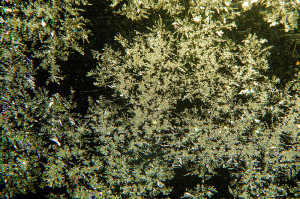
Little water is available for wildlife with the drought, and water that is has been frozen this week
The last two mornings though, with any accessible water frozen, this hen has been following us around, hoping to glean a drink from the buckets of warm water being carried out to the yard for the goats and poultry. We received less than an inch of rain last month, so both creeks on the property are still are still bone dry. I expect that until the creeks are flowing again, and everything thaws, Jenny is unlikely to move on.
Fortunately though this blast of cold air should move on in a few more days. After a record low of 21.7F yesterday, this morning we moved up two whole degrees to 23.7F, and some high thin clouds are starting to move over the area in advance of tomorrow’s predicted rain.
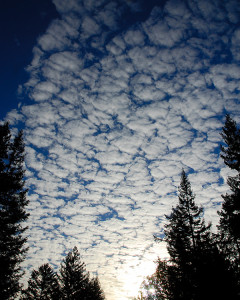
With the return of some clouds this morning, the temperatures warmed…slightly…but it’s still unusually cold
However, tomorrow night is expected to be coldest night of the week, with lows predicted in the teens, so we’re bracing for one last bone-chilling blast before Jack Frost, hopefully, finally moves on, and our temperatures return to something more typical of a coastal California winter.
The question is, with the incoming rain, and decreasing temperatures over the next 24 hours, will we see snow again?

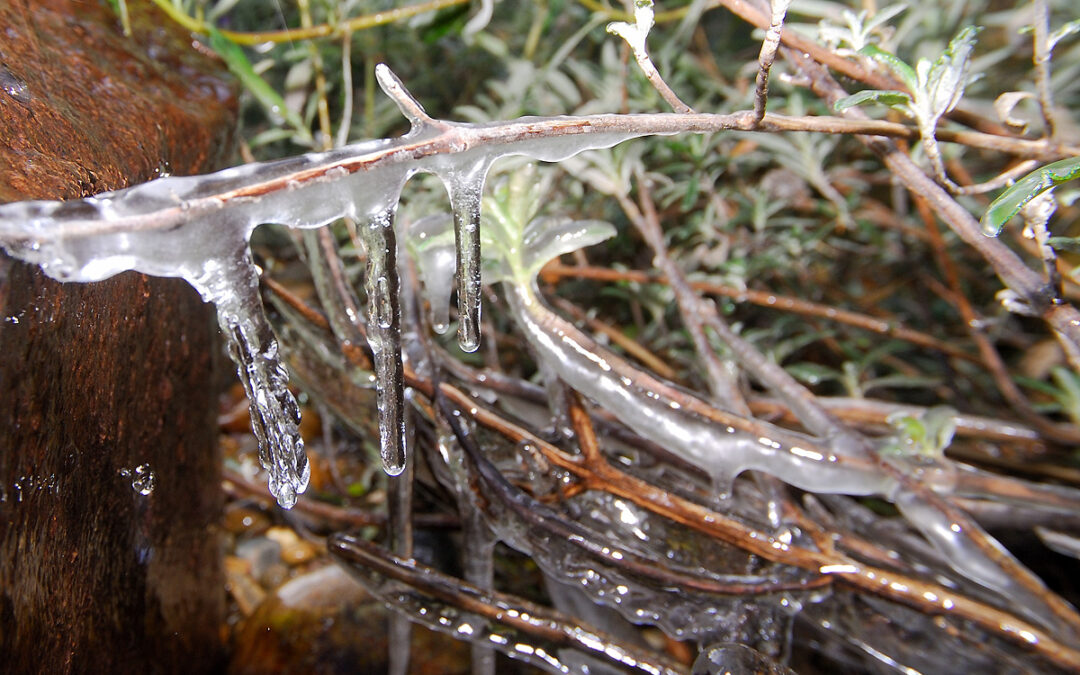

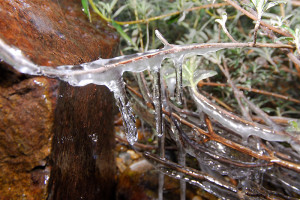
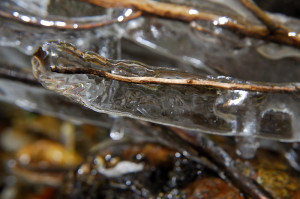

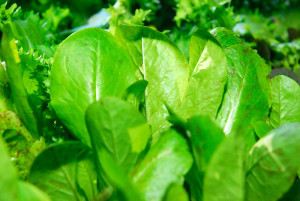



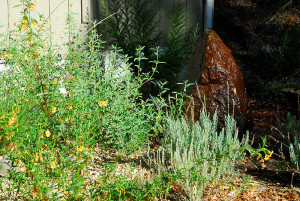
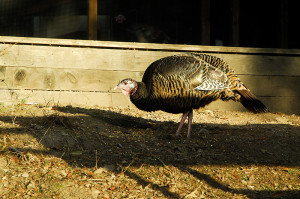
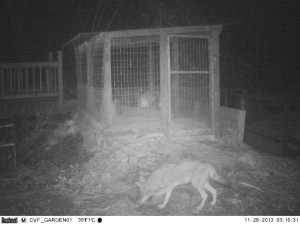
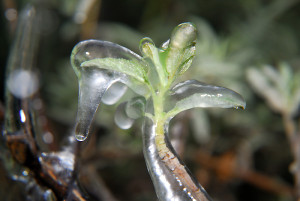
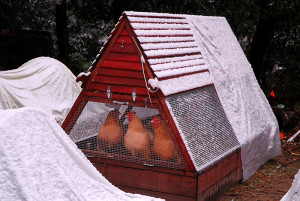







An icy coating makes many plants look so beautiful — although they may not like it too much. Hope you don’t see much damage!
About the snow: would you be happy to see it?
Actually, I would rather have snow. It’s prettier, it’s more fun, and tends to be less damaging to plants than just straight ice. Besides, when it snows here, it’s enough to be pretty, but never lasts long enough to snarl traffic or cause power outages, but I think on average it snows here about once every 20 years, so I’m not going to hold my breath as we just had snow two winters ago 😉
Wow, and here I thought we had it rough over here – with a record cold of 32, and days in the low 50s. But my plants aren’t used to that either, and besides, they are missing the rain.
Strange weather we are having for sure. I can’t wait for it to get a little more wet – and a little warmer.
Although the cold snap continues, I’m relieved to say that 21.7F has been the lowest temp over the last few days. I agree, more wet, and less cold. I still have native plants in the greenhouse I wanted to transplant a year ago, but it was too dry!
I agree I would rather have snow…so many things you have to deal with because of cold weather…hoping your weather warms.
It looks like we should start to warm up a bit by mid-week. No snow, unfortunately. It would have been nice and festive though 😉
I am getting chills just reading this! I love the photo of the rippled clouds in an icy blue sky. Jenny the wild turkey has probably been talking to some of your own turkeys, and she know how good it is there. (But does she know about Thanksgiving?)
By the way, I ordered some of your goats milk soap. It is fabulous!
Your low temp beat mine by .1 degrees. 🙂 That was the morning I had to get up and don a pair of long underwear because I was shivering in bed. It’s the first time I’ve ever seen ice form on my fountain. I’m so happy were back to kore normal temperatures but I sure do wish the drought would lighten up, we’ve only had 1.4 inches of rain since the start of the season (July 1).
I love the Jenny story. I hope the coyotes and the cougar leave her be. Your farm has really come along, it’s great to see!
That should be Michelle, not Mochelle – can’t type on these dang ipads.